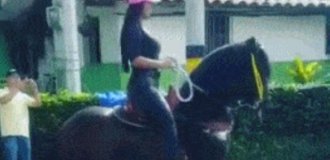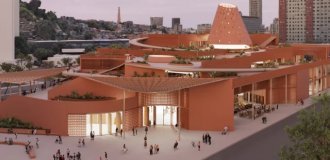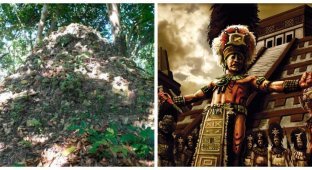In the Popotla neighborhood of Mexico City, there is a very old cypress tree called Árbol de la Noche Victoriosa (Tree of the Victorious Night). It was previously known as Árbol de la Noche Triste (Tree of the Sad Night), in reference to a historical event during the Spanish conquest of the Aztec Empire, when Hernán Cortés and his army of Spanish conquistadors, along with their indigenous allies, were driven out of the Aztec capital of Tenochtitlan. 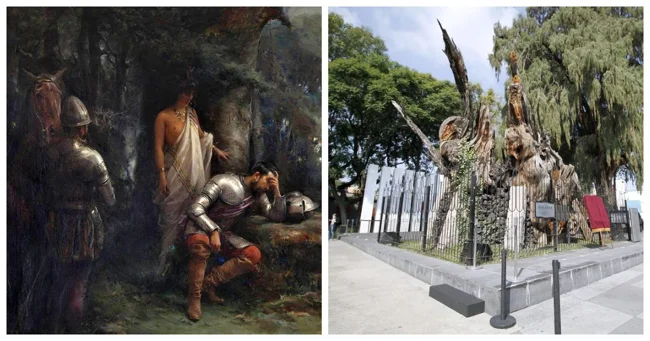
According to legend, Hernan Cortes wept under this tree on the night of his retreat, mourning the heavy losses his troops had suffered. Thus, the tree became known as Arbol de la Noche Triste.
In late March 1519, Hernan Cortes landed with a detachment of Spanish conquistadors at Potonchan on the coast of what is now Mexico. Cortes had been appointed by Diego Velázquez de Cuéllar, the governor of Spanish Cuba, to lead an expedition into the region ruled by the Aztec Empire. However, at the last moment, Velázquez cancelled the mission. Despite this, Cortés decided to continue the expedition. 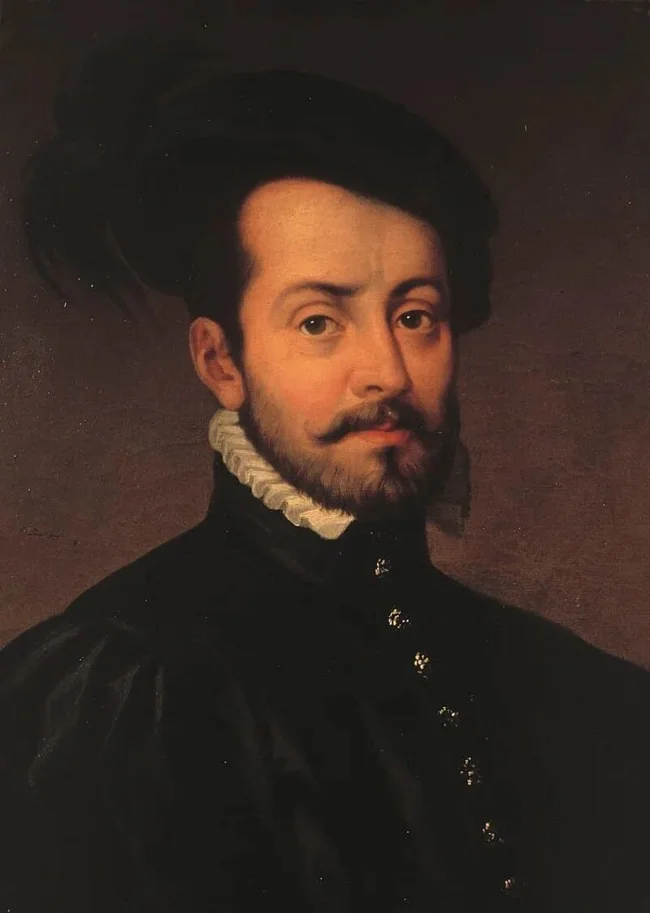
Hernan Cortés
Using a combination of military force and political strategy, Cortés managed to gain the allegiance of the Totonacs and Tlaxcalans (who were enslaved enemies of the Aztec Empire) and other tribes as he advanced toward the empire's capital, Tenochtitlan. In November, the Spanish troops entered the city and were received by its ruler, Montezuma II.
At first, the Aztecs treated the conquistadors well as long as they remained in the city. However, Governor Velázquez, enraged by Cortés's disobedience, sent an armed force under Pánfilo Narváez to detain Cortés and take back the lands and wealth he had conquered. Cortés was forced to leave a small garrison in Tenochtitlan under his lieutenant Pedro de Alvarado, and he himself, at the head of a small force, set out against Narváez. Having won a quick and brilliant victory, Cortés joined Narváez's forces with his own and returned to Tenochtitlan, learning that unrest had broken out in the city against the remaining Spaniards. 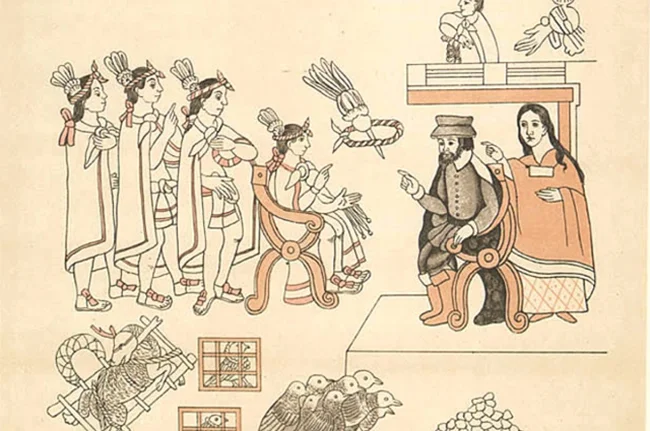
Meeting of Montezuma II and Cortes with an interpreter, November 8, 1519
Upon his return, Alvarado informed Cortes that he had attacked the Aztecs during a ritual ceremony, believing that they were planning to attack the Spanish. This action caused an outcry in Tenochtitlan. The Aztecs appointed a new emperor to replace Montezuma, whom they now considered weak and easily influenced by the Spanish. Cortes attempted to negotiate peace, and as a last resort, he urged Montezuma to appeal to his people to seek a truce. However, the enraged Aztecs rained down stones on the retired ruler.
By the end of June 1520, the situation had deteriorated rapidly. Desperate to leave the city and spurred on by an omen that one of the Spaniards had allegedly received, the conquistadors decided to flee. On the night of July 1, 1520, Cortes's large army headed west toward the Tlacopan Bridge. The causeway was apparently unguarded, and the Spaniards slipped out of their complex unnoticed, making their way through the sleeping city, seemingly lulled by a heavy rain. But before they could reach the causeway, elite Aztec soldiers discovered them and raised the alarm. 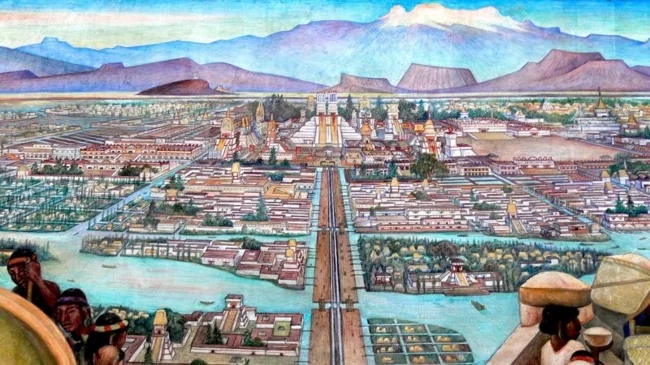
This is what Tenochtitlan looked like
As alarm spread, numerous Aztec warriors, both noble and common, emerged from their homes and began attacking the Spanish from all sides, using canoes or storming the causeway with swords, spears, arrows, and even stones. The Spanish fought their way across the causeway in the rain. Loaded with gold and equipment, some soldiers fell into the water and drowned. With a vanguard of horsemen, Cortes fought his way forward and reached dry land at Tacuba, leaving the rest of the expedition to fend for themselves during the deadly crossing.
Cortes, Alvarado, and the strongest and most skilled men managed to fight their way out of Tenochtitlan, although they were all wounded and exhausted. Cortes himself was badly wounded in the battle. All the artillery was lost, as were most of the horses. It is said that when Cortes saw the wounded trudging back to the village, his spirit was broken and he burst into tears. This event became known as La Noche Triste (The Night of Sorrows). 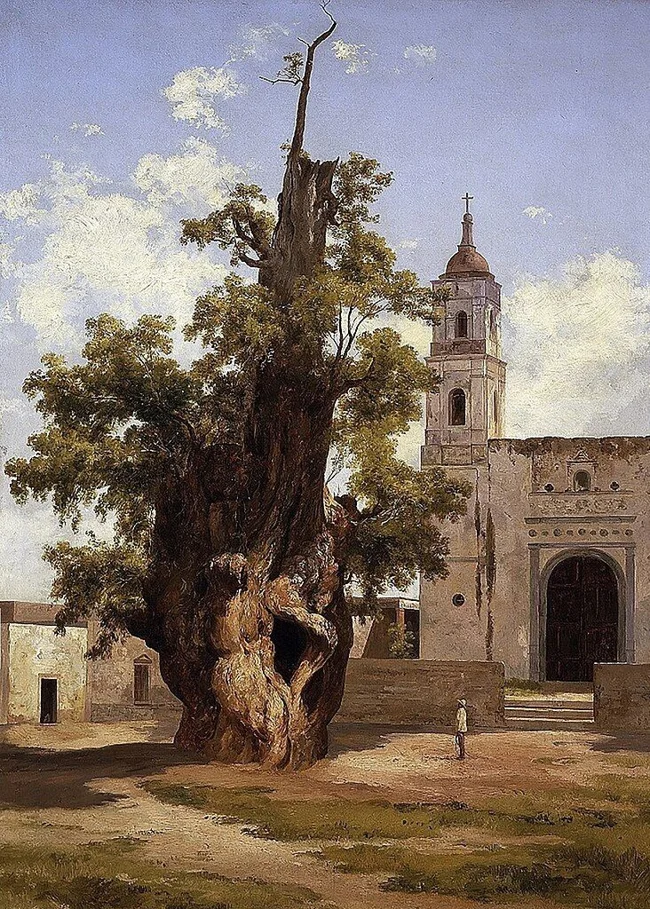
Painting by José María Velasco
There is no consensus among the sources on the total number of casualties suffered by the expedition. Cortes claimed that 154 Spaniards and more than 2,000 native allies died. However, historians estimate that about 450 Spaniards and about 4,000 allies died.
There is no historical evidence that Cortés wept under the cypress tree. Historians and scholars of the subject even doubt that the tree existed in 1520, or that the Spanish conquistador stopped to mourn his defeat, given the confusion of the military retreat. Contemporary texts attest to Hernán Cortés's sadness over the event, but do not mention the tree or a specific location. Hernan Cortes himself does not mention the tree in the letter he addressed to Emperor Charles V. 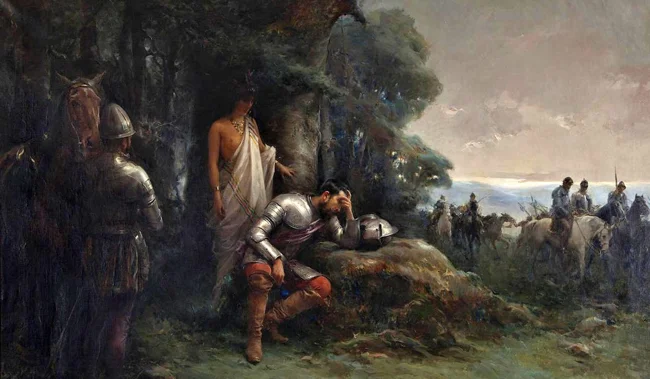
Manuel Ramirez Ibáñez "The Night of Sorrows of Hernan Cortes", 1890
The ahuete, or cypress tree, only became associated with the sad night episode in the 19th century. After an arson attack in 1872, an iron fence was erected around the tree and a plaque was installed describing the story. Over time, the legend of the tree grew, turning the ahuete into a symbol of the fall of the Aztec empire. 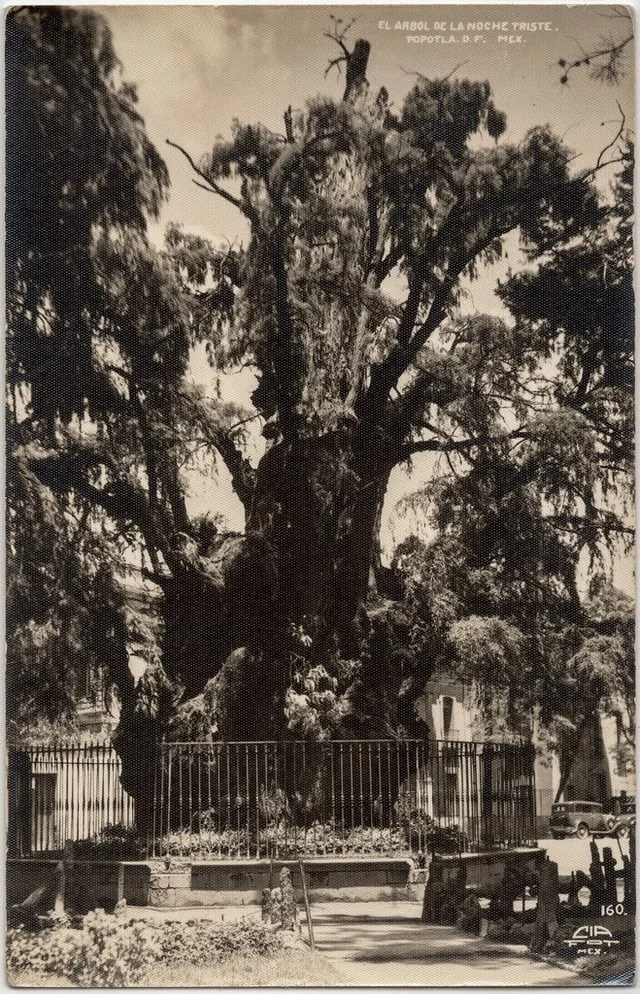
Now the ahuete is already dead. Over the centuries, the tree has deteriorated greatly. However, the place where it stood remains a historical landmark of Mexico City. 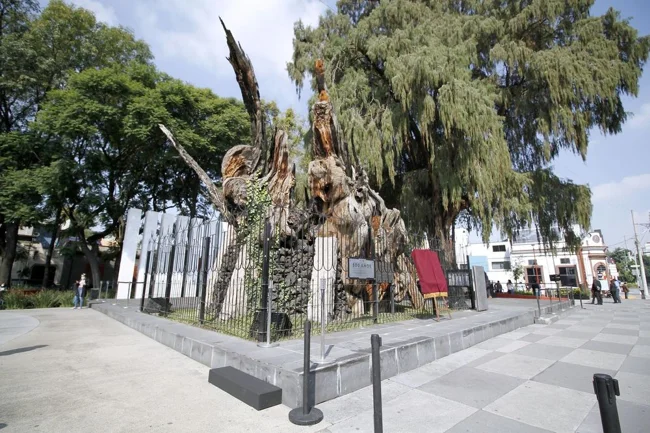
The Tree of the Victorious Night in 2021
In 2021, as part of the celebration of the 500th anniversary of the fall of Tenochtitlan, the Mexico City government changed the name of the tree to Árbol de la Noche Victoriosa (Tree of the Victorious Night), emphasizing the Aztec victory in battle rather than the Spanish defeat and mourning. The name emphasizes the importance of viewing historical events from multiple perspectives, recognizing the triumph of the Aztecs in defending their city, albeit temporarily.
Add your comment
You might be interested in:






